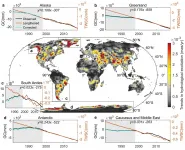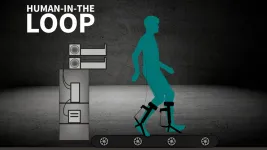INFORMATION:
NRG Oncology BR001 was supported by grants UG1CA189867 (NRG Oncology NCORP), U10CA180868 (NRG Oncology Operations), U10CA180822 (NRG Oncology SDMC), U24CA180803 (IROC) from the National Cancer Institute (NCI).
Citation
Chmura S, Winter KA, Robinson C, Pisansky TM, Borges V, Al-Hallaq H, Matuszak M, Park SS, Yi S, Hasan Y, Bazan J, Wong P, Yoon HA, Horton J, Gan G, Milano M, Sigurdson ER, Moughan J, Salama JK, White J. The Safety of Stereotactic Body Radiotherapy (SBRT) for the Treatment of Multiple Metastases: Findings from the NRG Oncology NRG-BR001. JAMA Oncol. doi:10.1001/jamaoncol.2021.0687. [Epub ahead of print].
About NRG Oncology
NRG Oncology conducts practice-changing, multi-institutional clinical and translational research to improve the lives of patients with cancer. Founded in 2012, NRG Oncology is a Pennsylvania-based nonprofit corporation that integrates the research of the legacy National Surgical Adjuvant Breast and Bowel Project (NSABP), Radiation Therapy Oncology Group (RTOG), and Gynecologic Oncology Group (GOG) programs. The research network seeks to carry out clinical trials with emphases on gender-specific malignancies, including gynecologic, breast, and prostate cancers, and on localized or locally advanced cancers of all types. NRG Oncology's extensive research organization comprises multidisciplinary investigators, including medical oncologists, radiation oncologists, surgeons, physicists, pathologists, and statisticians, and encompasses more than 1,300 research sites located world-wide with predominance in the United States and Canada. NRG Oncology is supported primarily through grants from the National Cancer Institute (NCI) and is one of five research groups in the NCI's National Clinical Trials Network.
http://www.nrgoncology.org
NRG Oncology shows safety of stereotactic body radiotherapy to treat multiple metastases
2021-04-23
(Press-News.org) PHILADELPHIA, PA - The first National Institutes of Health (NIH) National Cancer Institute (NCI)-funded clinical study examining stereotactic body radiotherapy (SBRT) in the treatment of oligometastatic breast, prostate, and non-small cell lung (NSCLC) cancers displayed evidence that SBRT can be safely used to treat patients who have multiple metastases. These results were recently published in JAMA Oncology.
The results of the Phase I NRG-BR001 trial, conducted by the NCI National Clinical Trials Network group NRG Oncology, indicate that SBRT treatment in standard doses was safe for 35 evaluable patients with a median of 3 metastases. There were no dose-limiting toxicities and over 50% of trial participants were alive at 2 years following treatment.
"Prior to this trial, little to no evidence was available to support that SBRT is a safe and tolerable treatment option for patients who have multiple metastases. Researchers have hypothesized that SBRT could improve survival outcomes for this patient population; however, it was imperative we determine the safety of this procedure, appropriate dose and scheduling, and how to coordinate across multiple centers the quality assurance of the procedures prior to testing its efficacy," stated Steven J. Chmura, MD, PhD, of the Department of Radiation and Cellular Oncology at the University of Chicago Comprehensive Cancer Center and the lead author of the NRG-BR001 manuscript. "To ensure safety, this trial used an extensive radiation QA process to test the accuracy of treating moving tumors and was the first NRG trial to require the use of 3D image guidance during treatment for soft tissue tumors."
NRG-BR001 enrolled up to 6 evaluable patients for each of the following 7 selected anatomic locations: bone/osseous (BO), spinal/paraspinal (SP), peripheral lung (PL), central lung (CL), abdominal/pelvic (AP), mediastinal/cervical lymph node (MC), and liver (L). As a single patient could contribute to more than one location, the safety question was able to be answered with 35 evaluable patients from the 42 enrolled trial participants. Patients were required to have 3-4 metastases or 2 metastases in close proximity to each other. SBRT starting dose was 50 GY over 5 fractions for the CL and MC groups, 45 GY over 3 fractions for the PL, AP, and L groups and 30 Gy over 3 fractions for the BO and SP group. Additional patients would be accrued as needed at defined de-escalated doses if any of the starting doses were not deemed to be safe.
The 35 evaluable patients had breast (n=12), NSCLC (n=10), and prostate (n=13) cancers. No dose de-escalations were needed. There were 8 instances of grade 3 adverse events. There were no treatment-related deaths.
SBRT for multiple metastases is now utilized in multiple ongoing Phase II and III NCI-sponsored trials. Follow-up research should be done in long surviving oligometastatic patients.
"These are important data from the multicenter study, confirming that complicated stereotactic body radiotherapy to multiple sites is safe and feasible. We eagerly await the results of ongoing, larger randomized trials to demonstrate how effective this is when compared to drug therapy alone for metastatic cancer," stated Mitchell Machtay, MD, the Associate Dean for Clinical Cancer Research at the Penn State College of Medicine and the interim Group Chair for NRG Oncology.
ELSE PRESS RELEASES FROM THIS DATE:
Recreating the earliest stages of life
2021-04-23
SAN FRANCISCO, CA--April 22, 2021--In their effort to understand the very earliest stages of life and how they can go wrong, scientists are confronted with ethical issues surrounding the use of human embryos. The use of animal embryos is also subject to restrictions rooted in ethical considerations. To overcome these limitations, scientists have been trying to recreate early embryos using stem cells.
One of the challenges in creating these so-called synthetic embryos is to generate all the cell types normally found in a young embryo before it implants into the wall of the uterus. Some of these cells eventually give rise to the placenta. Others become the amniotic sac in which the fetus grows. Both the placenta and the amniotic sac are crucial for the survival of the fetus, and defects ...
New study shows people with a high Omega-3 index less likely to die prematurely
2021-04-23
A new research paper examining the relationship between the Omega-3 Index and risk for death from any and all causes has been published in END ...
NAOC scientists make further step towards understanding dark energy
2021-04-23
The extended Baryon Oscillation Spectroscopic Survey (eBOSS) collaboration has released its latest scientific results. These results include two studies on dark energy led by Prof. ZHAO Gongbo and Prof. WANG Yuting, respectively, from National Astronomical Observatories of the Chinese Academy of Sciences(NAOC).
The study led by Prof. Zhao was recently published in Monthly Notices of the Royal Astronomical Society.
Based on eBOSS observations, Prof. ZHAO's team measured the history of cosmic expansion and structure growth in a huge volume of the past universe, corresponding to a distance range between 0.7 and 1.8 billion light years away from us. This volume had never been ...
Urban design standards needed to protect Fraser River salmon, SFU report finds
2021-04-23
A joint research study by the Pacific Water Research Centre at Simon Fraser University and the Fraser Basin Council points to the use of certified, nature-based solutions for protecting salmon and aquatic habitats in the Lower Mainland.
Salmon face various threats in the Lower Fraser Watershed (where the Fraser River passes through the Metro Vancouver geographical area), including habitat loss due to urban development and toxic stormwater runoff, which is projected to worsen due to climate change-driven extreme rain events.
The END ...
'Like a metronome': Stalagmite growth found to be surprisingly constant
2021-04-23
Like tree rings, cave stalagmites are a portal to a prehistoric Earth, and now scientists from UNSW Sydney have found they are consistently reliable as time trackers the world over.
In a global investigation into the growth properties of stalagmites distributed across the world, the scientists found that while growth fluctuations due to climate events are evident in the shorter period, stalagmite growth over the longer periods - tens of thousands of years - are surprisingly linear.
"Our new global analysis shows that we can consider stalagmite growth as being like a metronome and very ...
Climate has shifted the axis of the Earth
2021-04-23
WASHINGTON-- Glacial melting due to global warming is likely the cause of a shift in the movement of the poles that occurred in the 1990s.
The locations of the North and South poles aren't static, unchanging spots on our planet. The axis Earth spins around--or more specifically the surface that invisible line emerges from--is always moving due to processes scientists don't completely understand. The way water is distributed on Earth's surface is one factor that drives the drift.
Melting glaciers redistributed enough water to cause the direction of polar wander to turn and accelerate eastward during the mid-1990s, according to a new study in Geophysical Research Letters, AGU's journal for high-impact, ...
COVID-19 mobility restrictions effective for short duration, study finds
2021-04-23
CHAMPAIGN, Ill. -- Attempts at restricting people's mobility to control the spread of COVID-19 may be effective only for a short period, researchers said. A new study examines people's mobility for seven months during the pandemic in the United States using publicly available, anonymized mobile phone data.
Reported in the Journal of Transport Geography, the study alerts authorities to the need for more manageable travel restrictions and policies that reduce COVID-19 exposure risk to essential workers - who, because they are required to be physically present at their workplaces, remained highly mobile during the pandemic.
The longitudinal study is one of the first to compare mobility data using a broad ...
Ankle exoskeleton enables faster walking
2021-04-23
Being unable to walk quickly can be frustrating and problematic, but it is a common issue, especially as people age. Noting the pervasiveness of slower-than-desired walking, engineers at Stanford University have tested how well a prototype exoskeleton system they have developed - which attaches around the shin and into a running shoe - increased the self-selected walking speed of people in an experimental setting.
The exoskeleton is externally powered by motors and controlled by an algorithm. When the researchers optimized it for speed, participants walked, on average, 42 percent faster than when they were wearing normal shoes and no exoskeleton. The results of this study were ...
TPU scientists first study composition of pore waters in methane cold seep of eastern Arctic seas
2021-04-23
Young scientists of Tomsk Polytechnic University as a part of the team of Arctic researchers have studied pore waters in three areas of methane release on the surface. They first managed to define in details the composition of pore waters in the cold methane seeps of the Eastern Arctic seas. The research findings are published in the Water academic journal.
The research was based on the samples obtained during the Arctic expedition aboard the research vessel "Akademik Mstislav Keldysh" in 2019. The scientists and students from 12 scientific institutions, including Tomsk Polytechnic University, Moscow Institute of Physics and Technology, Lomonosov Moscow State University, the Research Center of Biotechnology ...
US asbestos sites made risky by some remediation strategies
2021-04-23
The Environmental Protection Agency (EPA) largely remedies Superfund sites containing asbestos by capping them with soil to lock the buried toxin in place. But new research suggests that this may actually increase the likelihood of human exposure to the cancer-causing mineral.
"People have this idea that asbestos is all covered up and taken care of," said Jane Willenbring, who is an associate professor of geological sciences at Stanford University's School of Earth, Energy & Environmental Sciences (Stanford Earth). "But this is still a lingering legacy pollutant ...




